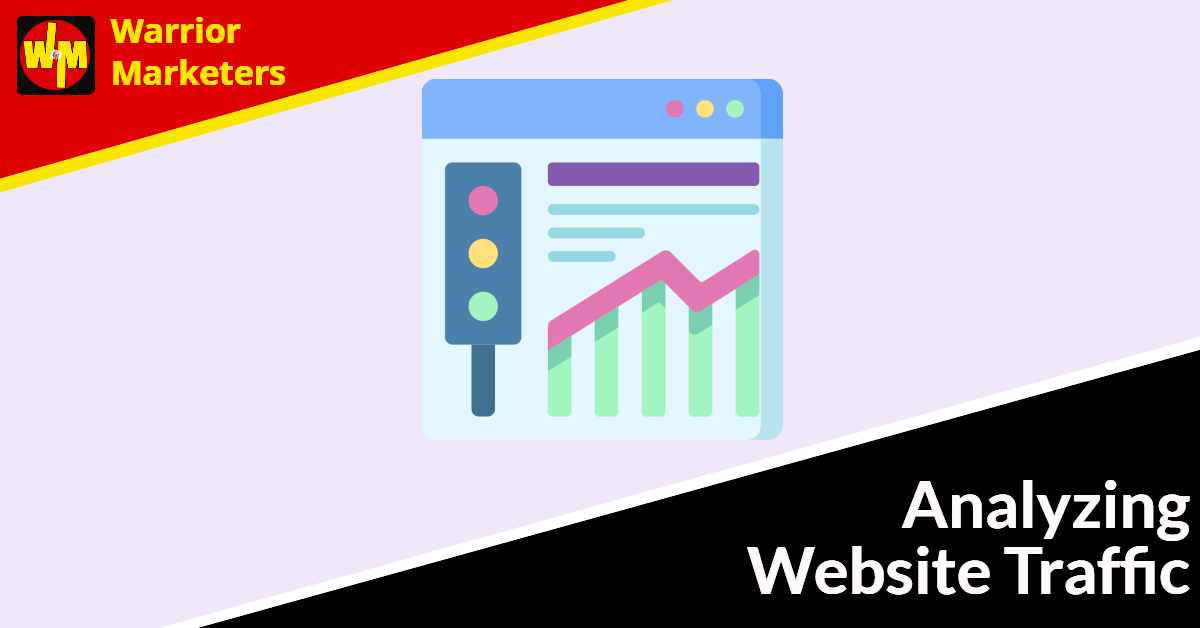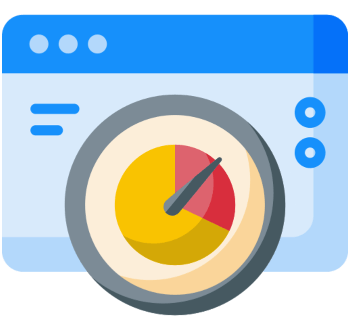

If you have read this post, you’ve now got traffic coming in, which is great. Now you need to make the most of that traffic, which means persuading visitors to take a specific action.
The idea here is that converting your traffic creates more benefits and help for your audience, while generating more profit for your business.
To that end, this part is going to show you how to start to optimize conversions on your website, in your ads, and within your email campaigns.
Let’s get right to it…
Get The Basics In Place
Let’s start by making sure you’ve got the basics down, and you’re using optimization best practices.
Understand The Conversion Basics

The first thing you need to understand is that conversion optimization isn’t based on just one factor. Instead, it’s about optimizing multiple factors.
Here’s what you need to put into place:
- You must have the right (targeted) audience.
- You need to have something this audience is interested in/wants.
- You need to craft compelling content or copy to persuade this audience.
- You need to build trust and overcome objections.
- You need to be sure you’re creating a user-friendly experience.
- You need to follow up with your audience.
- You need to build good relationships so that your audience trusts you.
- You need to test and track so that you know exactly what works and what doesn’t.
We’ll cover these exact issues in detail throughout this article.
Set Clear Goals

Each piece of content or each page of your website should have one clear goal. If you try to point your audience towards taking multiple steps, they’re going to get overwhelmed or confused.
You want to keep it simple. One goal per page, and everything on that page is designed to help the visitor take the desired action.
11 Examples Of Actionable Goals

There are a variety of ways you can convert your visitors to have them take a specific action.
Here are examples of the types of goals you might set for your content:
- Join a list in order to get a lead magnet.
- Buy a product.
- Start a free trial.
- Begin a low-cost trial.
- Upgrade a membership.
- Purchase an upsell/cross-sell on an order form.
- Fill in a form (e.g., to request a free quote).
- Call a telephone number.
- Register for a webinar.
- Register for a contest.
- Share a link/piece of content.
This isn’t an exhaustive list, as you may have specific actions you want your audience to take.
Remember, however, that you should pick just ONE primary goal for each piece of content (or for each page on your website).
Remember That Less Is More

Sometimes marketers have one clear goal (such as “buy a product”), but they still give too many options. For example, they might give the prospect the option to buy Product A or Product B or Product C.
If you want better conversions, then tighten your focus. Pick one specific action, limit the options within that action, and then focus the content on getting the visitor to take that specific action (e.g., buy Product A).
Be Realistic With Conversion Rate

In addition to setting content goals (the action you want your users to take), you also need to select your metrics and set goals around those metrics.
For the purposes of this article, the one metric we’re most concerned about is the conversion percentage.
Or in other words, for every 100 people who visit a page on your site or see a piece of content, how many people take action?
The key here is that you need to be realistic with your conversions.
For example, you can’t expect a 20% conversion rate on a $100 product with a cold audience. For this example, your conversions are more likely to be around 2% — more for warm audiences, better sales copy, and so on.
Be realistic so that you don’t get disappointed. But at the same time, always strive to do better and increase those conversions using the tips and ideas you’ll learn in this article.
Find Out What Your Audience Wants

You can have all the other pieces in place as far as conversion optimization, but if you aren’t giving your audience what they want, then your conversions will suffer.
That’s why you need to do your market research in order to determine:
- What your audience is already buying.
- What topics interest them.
- What they want (that may not exist in the market yet).
Which brings us to the next point…
Five Ways To Find Out What Your Audience Wants

Take these steps to do your market research:
- Search marketplaces such as ClickBank.com, Udemy.com, JVZoo.com and Amazon.com to see what your audience is already buying.
- Check your competitors’ sites directly to see what they’re selling.
- View ads in your niche to see what your competitors are paying money to advertise.
- Survey your audience to find out what they want.
- Use keyword tools to see what your audience is searching for in the search engines.
Take note that while you should use all these methods in order to get as much insight as possible, the best way to find out what your audience wants is to see what they’re already buying.
Three Market Research Tools To Use

As you do your research, you’ll want to utilize these tools:
- A keyword tool such as WordTracker.com.
- The Google Trends keyword tool which will tell you if your product/topic is evergreen.
- A tool such as BuzzSumo.com or ContentStudio which lets you know what type of content is currently trending.
Next…
Three Tips For Conducting Surveys

A survey can help you get better insight into what your audience wants. Follow these tips:
- Be sure you’re surveying a targeted audience.
- Craft neutral questions (not leading questions).
- Keep your survey short in order to gather more responses.
Next…
Understand Who Your Audience Is

The more you know about your audience, the easier it will be to craft offers and content that really resonate with them. Finding out what they’re already buying will help you select the right offers.
However, learning about who your audience is – from their basic demographics to their hopes, fears and desires – will help you create content that makes each prospect feel as if you’re speaking directly to them.
If you can forge this sort of connection with every piece of content, you’ll see your conversions rise.
Spend Time Observing Your Audience

One way to learn more about your audience is to spend some time observing them, talking to them, and even becoming a part of the target market. You can:
- Talk to them offline at places like meet ups (meetup.com) or other places they congregate.
- Watch their conversations online in niche forums, blogs and Facebook groups.
- Do what they do in any given day to better understand their challenges/frustrations as well as their triumphs.
For example, if you spend time talking to dog owners or viewing their online conversations, you may find that many small dog owners struggle with a pet that seems to “rule the roost” despite the small size.
That tells you that you can create products and content that address these issues, but you can also speak directly to these dog owners in a way that will resonate with them
(e.g., “It seemed so simple – you were going to clip your dog’s nails, but the next thing you, know his lip was up, and he’s snarling at you…”).
Research Demographics

Another way to learn more about your audience is to research their demographics using Google.
For example, you’d search for “dog owner demographics” or “demographics of people with diabetes.” Then make note of:
- Gender
- Age
- Location
- Income
- How much they spend in the niche.
- Marital status.
- Kids or no kids.
- Highest education level obtained.
- Jobs
- Hobbies
… And anything else you can dig up.
Be sure to use reputable sources of information only, such as those coming from universities, news organizations and professional research organizations (such as Pew Research).
Set Yourself Apart From Your Competitors

When a prospect lands on your page, they’re going to be wondering why they should do business with you instead of your competitor.
If you want the sale, the subscriber, or some other conversion, then you need to give your visitor a reason.
A good way to do this is to develop a USP (unique selling point), which is the unique benefit your prospects will get by doing business with you. It’s what makes your offer or business different and better than that of your competitors.
Here’s a real-life example: Papa John’s pizza rolled their USP into the slogan, “Better ingredients, better pizza.” While other competitors (such as Domino’s Pizza) set themselves apart based on the speed of delivery (30 minutes or less), Papa John’s set themselves apart based on taste.
12 Ways To Develop An USP

Here are the different ways you can set yourself apart from your competitors:
- High price.
- Low price.
- Value
- Strong guarantee.
- Excellent customer support/service.
- Fast delivery.
- Unique delivery or format.
- Special bonus.
- Your unique qualifications for teaching an info product.
- Unique benefits of your product.
- Being the “first” or original in some category.
- Unique way the product is made.
This is not an exhaustive list – you’ll want to do some brainstorming on your own to determine what makes your business and your offers unique.
Be sure to research your competitors to see what USP they’re using so that you don’t pick the same one. You’ll also want to pick a USP that your prospects really value.
Don’t Trick Your Audience

You don’t need to strongarm your audience, use psychological tricks, use click bait or do anything else to trick or manipulate your audience into taking action.
If you’ve got a targeted audience, you put a desirable offer in front of them, and you explain this offer by sharing benefits, then you’ll naturally get the conversions you desire.
On a related note…
Remember This Key

Your reputation is one of your most valuable assets, and it has a big impact on your conversions.
If you’ve got a great reputation in your niche, you’ll always produce better conversions than those who have poor reputations.
That’s why you want to protect your reputation by avoiding the tricks mentioned above, being honest with your audience, and always promoting high-quality offers that will really help them.
So, you will now be hopefully be generating more traffic to your website, and converting that traffic into either leads and/or buyers. For your convenience, you can get all the tips mentioned in both posts in a single handy detailed report; just click on the featured resource below, download, read it and take action 🙂














































